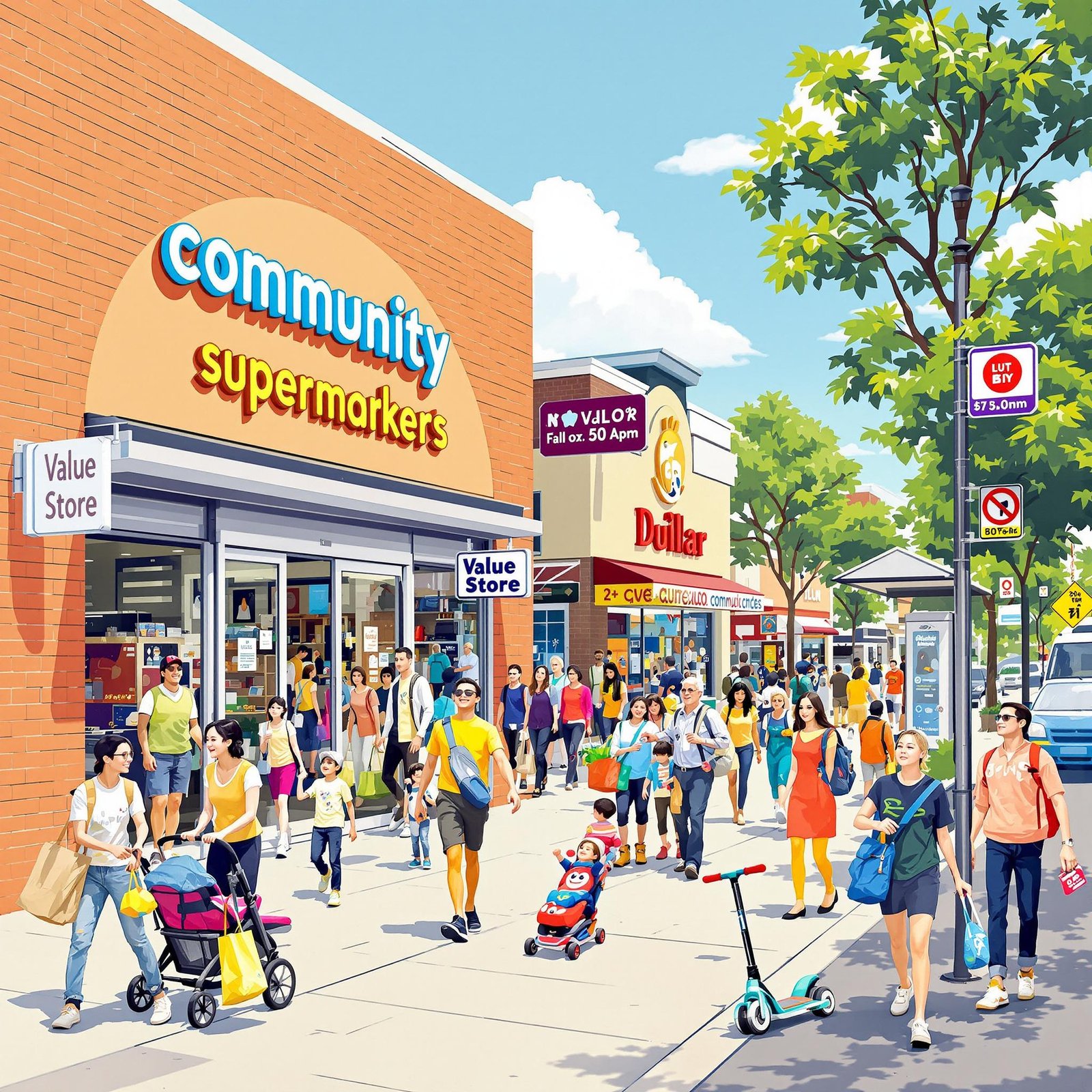「地點、地點、地點!」這句商業不動產的古老箴言,對一元店(或低價折扣店)來說顯得更加重要,因為一元店的核心模式是依靠低利潤和高銷量。精心選擇的地點是一元店成功的基石。它不僅決定了人流量,還直接影響盈利能力和長期生存能力。那麼,如何找到這個「金礦」呢?本指南提供了有效選址的系統方法和需要考慮的關鍵因素。
I.精確定位您的目標:瞭解您的核心客戶群
在物色地點之前,先清楚界定您的目標顧客。一元店的主要吸引力在於其無與倫比的價值。因此,您的核心顧客通常包括
- 注重預算的家庭: 尤其是有小孩的人,他們對日用品、小玩具、文具等需求量很大。
- 學生團體: 由於零用錢有限,他們會尋找零食、文具和小型生活用品。
- 工人階級和藍領工人: 他們注重實用性和經濟實惠,是日常用品的穩定消費者。
- 年長公民: 通常有固定收入,對價格敏感,喜歡在家附近方便購物。
- 衝動的買家和討價還價的獵人: 受到低價的吸引,享受找到 「好交易」 的快感。
瞭解這一點有助於您找出人口結構與目標市場相符的區域。

II.交通為王:評估人流量與交通便利性
充足且相關的顧客流量是您商店的命脈。在評估地點時,請專注於
- 人流:
- 關鍵領域: 大型住宅群入口、社區中心、公車站/捷運站附近、學校附近、濕貨市場/超市旁邊。
- 觀察方法: 在不同時間(平日、週末、早上、中午、晚上)進行現場觀察,以瞭解交通流量模式和人口統計。
- 車輛交通與停車便利性:
- 可見度: 確保店鋪位置容易被駕駛者看到;十字路口和主要道路沿線是很好的選擇。
- 停車場: 附近有充足、方便、最好是免費的停車場是非常重要的。許多顧客可能會快速停留或一次購買多件商品。
- 公共交通便利性: 靠近公車站或地鐵出口可大幅擴大您的服務範圍,吸引依賴公共交通工具的顧客。
III.地點、地點、地點:分析周圍的商業生態系統
您的商店並非孤立存在,其周遭環境會產生巨大的影響:
- "鄰居」很重要
- 理想的合作夥伴: 超市、雜貨/濕貨市場、大型社區、郵局、銀行和快餐店(會產生穩定的客流量)附近的地點是理想的鄰居。跑腿的顧客很可能會突然造訪您的一元店。
- 避免衝突: 太靠近相同的低價折扣店可能會導致惡性競爭;請仔細評估市場容量。不過,有時適度的群聚(形成一個小型購物區)可以互相促進人潮。
- 輔助業務: 鄰近的服裝店、零食店、嬰兒用品店等,可創造互補的營商環境,共同吸引顧客。
IV.眼見為實:商店能見度與形象
確保您的商店容易被發現:
- 街道正面: 優先考慮面向街道的位置;避免深巷或上層。
- 店面外觀: 寬敞明亮的店面能吸引更多人的注意,並方便產品展示。
- 無遮擋的景觀: 檢查是否有大樹、廣告牌或建築物等障礙物阻擋視線。
- 標誌空間: 確保您的店招有足夠且顯眼的空間。
V.成本控制:租金和潛在開支
Dollar 商店的利潤微薄,因此租金成為關鍵因素:
- 合理的預算: 根據您的財務預測,確定可負擔的租金範圍。如果租金無法負擔,就不要過度追求「黃金」地段。
- 物超所值: 有時候,次要地點(如社區入口而非核心商業中心)的租金較低,客流量也較適合,能提供更好的價值。
- 隱藏成本: 除了月租之外,還要詢問物業管理費、水電費、轉讓費(如有)和裝修費用。仔細審閱租約條款。
VI.市場研究:以數據支持決策
不要僅僅依賴直覺;應使用資料來為您的判斷提供資訊:
- 人口統計資料: 研究目標區域的人口密度、年齡結構、收入水平等。
- 競爭對手分析: 調查附近現有的一元店或同類商店 - 查看其經營狀況、產品組合和客流量。
- 交通報告: 有些地方政府或商業機構會提供主要街道的交通流量資料。
VII.現場檢查與長期展望
- 多次訪問: 如前所述,在不同的日子和時間重複造訪可能的地點,以全面瞭解交通模式和環境。
- 與鄰居交談: 與附近的企業主聊天,深入瞭解該地區的實際商業狀況和潛在問題。
- 考慮未來發展: 調查該地區未來的任何市政規劃、社區建設計畫或商業發展,以評估其長期潛力。
VIII.法律規定與合約細節
- 分區: 確認該地點是否劃為零售業區。
- 租賃協議: 仔細審閱關鍵條款,如租約期限、續約選擇、免租期、轉租限制和維護責任。如有需要,請尋求專業建議。
結論:
為一元店選址是一個有系統的過程,需要耐心、勤勉和全面的考慮。它結合了市場瞭解、資料分析和實地觀察。良好的開始是成功的一半。只要遵循本指南中的步驟,並將其與您自己的商業策略和資源相結合,我們相信您一定能找到理想的地點,讓您的一元店在此生根發芽、茁壯成長、生意興隆。祝您開店成功,生意興隆!
關於本系列:
如何開一元店是我們AwwwStore平台推出的系列專欄。通過提供專業的開店教程,包括:供應鏈管理、店鋪選址、店鋪裝潢、員工培訓、一元店行銷等內容,讓有志於一元店創業的朋友加深瞭解。AwwwStore致力於打造全球一元店數位供應鏈,讓每一位想開設一元店的朋友更輕鬆、更便捷。



